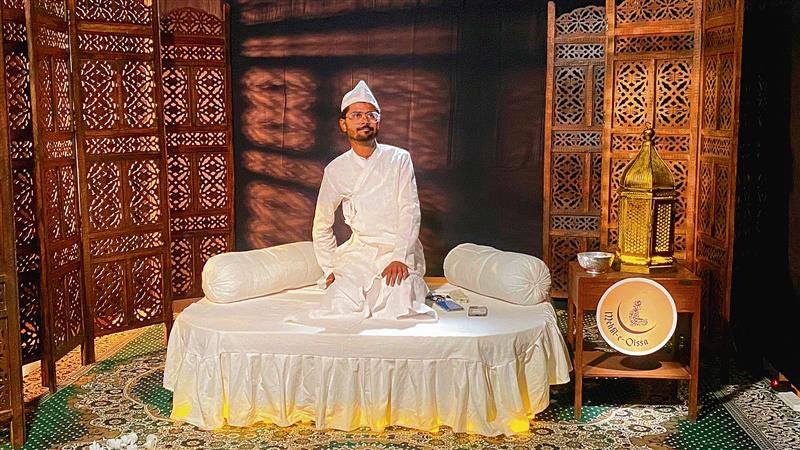Story of the hills
Adept in Dastangoi, Azharuddin Azhar treats many a soul in village Naggar, Himachal Pradesh, with the wonderful stories that he narrates in his own unique style, all with the aim of propagating oral storytelling as an art form
Sheetal
A man in all whites wearing an Awadhi choga or Angarakha kurta without collar, do palle ki topi and Aligarh pyjama, sits on an elevated platform on a low wooden table called the takht, and addresses quite a contrasting audience donning pahari dhatu or topis in the picturesque Naggar village of Himachal Pradesh.
This man, Azharuddin Azhar, is called Dastango and the art form is Dastangoi, derived from two words — Dastan and Goi — which means ‘story’ and ‘to tell’, respectively, in Persian language.
Unlike other performers, Dastangos don’t rely on any props or music; instead, they make storytelling an interesting affair for the audience with their linguistic and acting talents. While many Dastangos have revived this forgotten art from the Mughal times, and before its 300 years of reign in parts of Persia, Arabia and India, it’s interesting to see Gen Z student of Urdu with an interest in storytelling taking this art form forward and branching it out in Hindu-majority state like Himachal Pradesh.
Aligarh-born Azhar, who has been living in Naggar village of Kullu Valley since 2021 has recently initiated the Himachal Dastangoi Project, where he has combined his expertise in the art form with the rich folklore of Himachal to create something that’s contemporary and in sync with the changing times.
The rich usage of Urdu is a must for him, but to make it interesting for the local crowd Azhar has bent some rules. “Being well-versed with Urdu, to narrate dastans in that language is easier for me. But I think it’s not always necessary to stick to norms because not everyone has the same vocabulary or interest in language that people in the 13th century had, when it all started. While I have picked local folklore, which aligns with the Urdu way of storytelling and also used many Urdu words for my first public performance, I would like to bring more and more stories under this project. It will help propagate oral storytelling as an art form and educate the youngsters about their local history.”
Azhar credits Professor Danish Iqbal from Jamia Millia Islamia for everything he has learnt about Dastangoi. “When I took a break for a year to be in Himachal Pradesh, it led me away from Dastangoi, as I looked after my friend’s café and explored nature. As years went by, even though I wasn’t practising much, I never left my habit of reading Urdu literature and other historical books.”
Azhar had first performed in 2019 and followed it up with many other performances. In Himachal, as his contacts and association with locals grew, he got an offer to perform for a private audience last year. This led him to the idea of doing something that locals would be interested to learn about.
Azhar talked to many local storytellers and documented their stories, as he researched about Himachal’s folklore. His passion to preserve and carry forward the oral traditions of pahad made him translate them into a Dastangoi performances. His first-ever Dastangoi with pahadi stories was heavily derived from Santram Vatsya’s book Himachal Ki Lok Kathayein.
“My interest in knowing about old temples and oral traditions of Kullu Valley led me into merging two of my interests together — regional history and Dastangoi,” he says.
Azhar admires the works of poets like Ibn-e-Insha, Noon Meem Rashid, Faiz Ahmed Faiz, Ghalib and Jaun Eliya, and author Saadat Hasan Manto, but to become a Dastango which book is a must-read? He names not one but many, “Hamzanama, also known as Dastan-e-Amir Hamza by Ghalib Lakhnavi, Bagh-o-Bahar by Mir Amman and other stories by Amir Khusro.”
Rich folklore, calming weather
Azhar calls Naggar a place rooted in Vedic history, traditions and ancient folklore, but also open to change and modernism. “Naggar is home to art and sacred practices since the Vedic times. When I came here, I felt really accepted. Besides the serenity of this Himalayan town, its rich history makes it a special place.”
Unlock Exclusive Insights with The Tribune Premium
Take your experience further with Premium access.
Thought-provoking Opinions, Expert Analysis, In-depth Insights and other Member Only Benefits
Already a Member? Sign In Now











